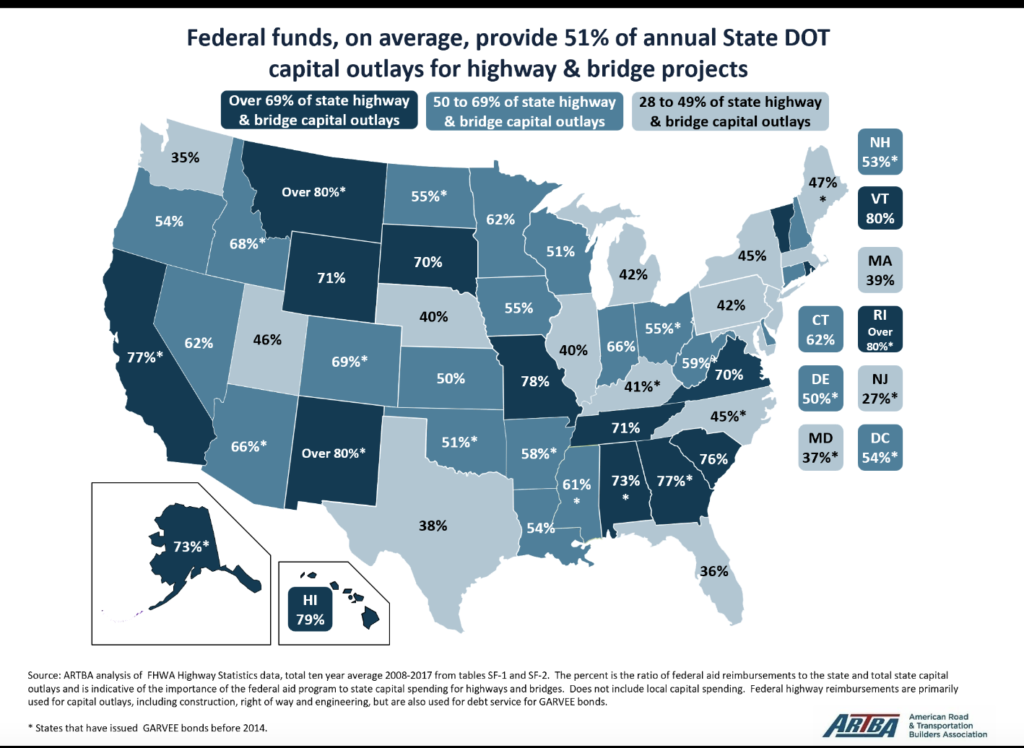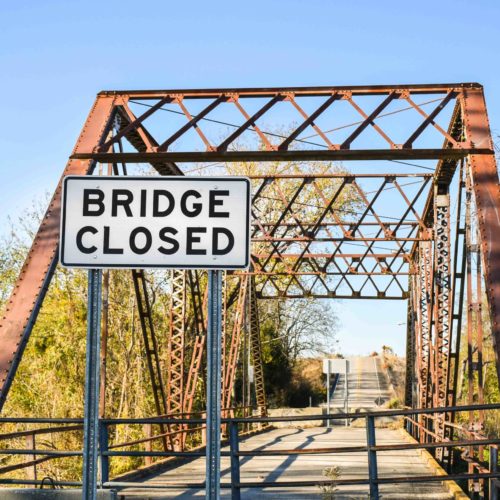States, grappling with massive revenue losses, seek long-term fix for transportation budgets
This article appears in the 2020-21 edition of CSG East’s Perspectives Magazine.

When governors began enacting stay-at-home orders last March amid the coronavirus pandemic, state transportation officials saw a crisis unfolding before their eyes.
Ridership plummeted on the region’s public trains and buses, and highway traffic volumes declined, leading to a steep drop in revenue from tolls, motor fuel taxes, general sales taxes, and other sources that help fund highways and transit systems.
By July, more than $8 billion in transportation projects planned in 14 states had been canceled or delayed, according to the American Road & Transportation Builders Association, and public transit systems reported massive losses.
“Our story is, I suspect, similar to most every other state’s stories: It’s a story of collapsing revenues at a moment in time when we don’t have tremendous financial support for transportation,” said Pennsylvania state Representative Mike Carroll, speaking at a virtual roundtable hosted by CSG East’s Transportation Committee in August.
The roundtable offered committee members an opportunity to share strategies for addressing the funding gaps and to voice their long-standing support for a federal plan to provide stable funding to maintain the nation’s aging highways, bridges, and public transit systems. Officials warned that without an immediate infusion of federal aid, state and local projects would stall, leading to less safe roadways and massive layoffs.
States seek federal help as revenues drop
Even before the pandemic hit, state transportation budgets were facing significant shortfalls. For more than a decade, road and bridge improvements have been hampered by a steady decline in federal fuel tax collections flowing into the Highway Trust Fund and serving as the primary source of funding for highway and bridge infrastructure. The tax was not designed to keep pace with inflation: Its current value is around 40 percent of what it could buy in transportation improvements in 1993. An increase in fuel efficiency and a rise in electric vehicle ownership have further undermined revenue, leading drivers to buy less gasoline.

Credit: Courtesy of American Road & Transportation Builders Association.
The stay-at-home orders accelerated this funding crisis. In late March, with infection rates soaring in the Northeast, Vermont state Representative Patrick Brennan submitted testimony to Congress on behalf of the CSG East Transportation Committee urging passage of a multi-year surface transportation bill in 2021 with significant increases in federal funding. In 2019, the CSG East Transportation Committee had approved a resolution that offered a framework for federal investments in short- and long-term projects, including rural and urban transit systems, new highway construction, and maintenance of aging bridges. Those investments are critical now, given the massive reduction in revenues in the region due to the pandemic, said Brennan, who chairs the committee.
States in CSG East’s region could experience a combined $43.6 billion loss in revenue in fiscal year 2020, according to a July analysis prepared for CSG.
“Vermont, no different from any other state, relies upon a significant, long-term, federal level of commitment to support our nation’s transportation system. Sustained federal investments at the local and state levels and extending to the regional level will immeasurably improve the condition of our transportation infrastructure, support good-paying jobs, and aid in our economic recovery,” said Brennan.
Bracing for ‘multiple years of financing uncertainty’
The plunge in revenues has been acute for metropolitan areas, where public transit serves as the backbone of local economies.
The Coronavirus Aid, Relief, and Economic Security (CARES) Act enacted in March provided $25 billion for public transportation. Still, an analysis commissioned by the nonprofit Transit Center found that public transit agencies nationwide face a shortfall of up to $40 billion through the end of 2021.
At the peak of the pandemic last spring, ridership on the New York City subway system, the nation’s largest, dropped by 92 percent. In August, officials at the Metropolitan Transportation Authority projected a $16.2 billion deficit through 2024.
That month, officials at the Southeastern Pennsylvania Transit Authority (SEPTA), which serves the greater Philadelphia area, said the agency was losing $1 million a day and projected hundreds of millions in annual fare revenue losses through fiscal year 2023. That could trigger cuts in service, which would potentially affect hundreds of thousands of bus and rail customers, they warned.
“The immediate financial impact of COVID-19 on SEPTA’s operating budget has been nothing short of devastating, and we are bracing for multiple years of operating funding uncertainty that will challenge our ability to serve the diverse needs of our region,” said Leslie Richards, SEPTA’s general manager, in testimony provided during a hearing of the Pennsylvania House Transportation Committee on August 19.
The agency called for additional emergency federal and state funding to avoid massive service cuts and layoffs.
Commuter services in New Jersey were struggling as well. “On the busing side, we have a mix of public busing and private routes, and we have a concern that some of the private routes that were teetering on solvency may close without federal support,” said New Jersey State Assemblyman Dan Benson, during the CSG East Transportation Committee’s virtual meeting.
A short-term fix
In September, Congress offered some relief. Lawmakers approved a one-year extension to a federal transportation law, the 2015 Fixing America’s Surface Transportation (FAST) Act, which was set to expire on September 30. The law had allocated $305 billion over five years for highways, public transportation, highway and motor vehicle safety, rail, research, and other programs. The extension provides resources to help keep the Highway Trust Fund solvent through the end of fiscal year 2020. It also allocates $9.1 billion for the Federal-aid Highway Program and a $3.2 billion transfer for mass transit, according to an analysis from the American Association of State Highway and Transportation Officials.
State officials cautioned that extending the FAST Act through 2021 is a mere temporary stopgap measure, given projections that the pandemic’s long-term impact could be worse than the 2008 recession. They vowed to continue to push for new legislation that authorizes stable, multi-year funding.
“We’re going to be hopeful that a transportation bill can be shepherded through next year,” said Carroll.





